I have been visiting Colombia since 2105 and have learned a lot about this beautiful country during that time. A lot of people ask me what it’s like here, and I usually start by describing the gorgeous and diverse landscapes, and the friendly people. That being said, there are so many things that might be surprising to first-time visitors (as they certainly were to me!), so I thought I’d put a list together of the top 20 things to know before visiting Colombia.
1. English is not common

It is said that less than 10% of the Colombian population speaks English. That means that more times than not, you will not be able to communicate in English while traveling around the country (outside of major hotels). This is one of the most important things to know before visiting Colombia because I found it quite difficult to navigate when I first arrived and knew nothing but “hola,” “gracias,” and “donde está el baño.” (LOL) That being said, it is still possible, it can just be extremely frustrating.
That is why I recommend learning some basic phrases and words before you visit. This isn’t too groundbreaking, as I think as a responsible traveler you should always try to learn at least a few words of the language of the country you are visiting! You can’t and shouldn’t assume that everyone will speak YOUR language when you are visiting THEIR country.
I have found Duolingo to be the easiest, fastest, and most efficient way to learn basic Spanish phrases that will help you navigate. There is even a travel section that will help you specifically with travel phrases.
2. There are specific ways to greet someone depending on gender
In Colombia, women often give one kiss right cheek to right cheek when meeting or greeting other women OR men. Men meeting or greeting other men, however, will shake hands. This is pretty common in most Latin American countries but wanted to mention just in case you weren’t aware.
3. Always watch where you’re walking
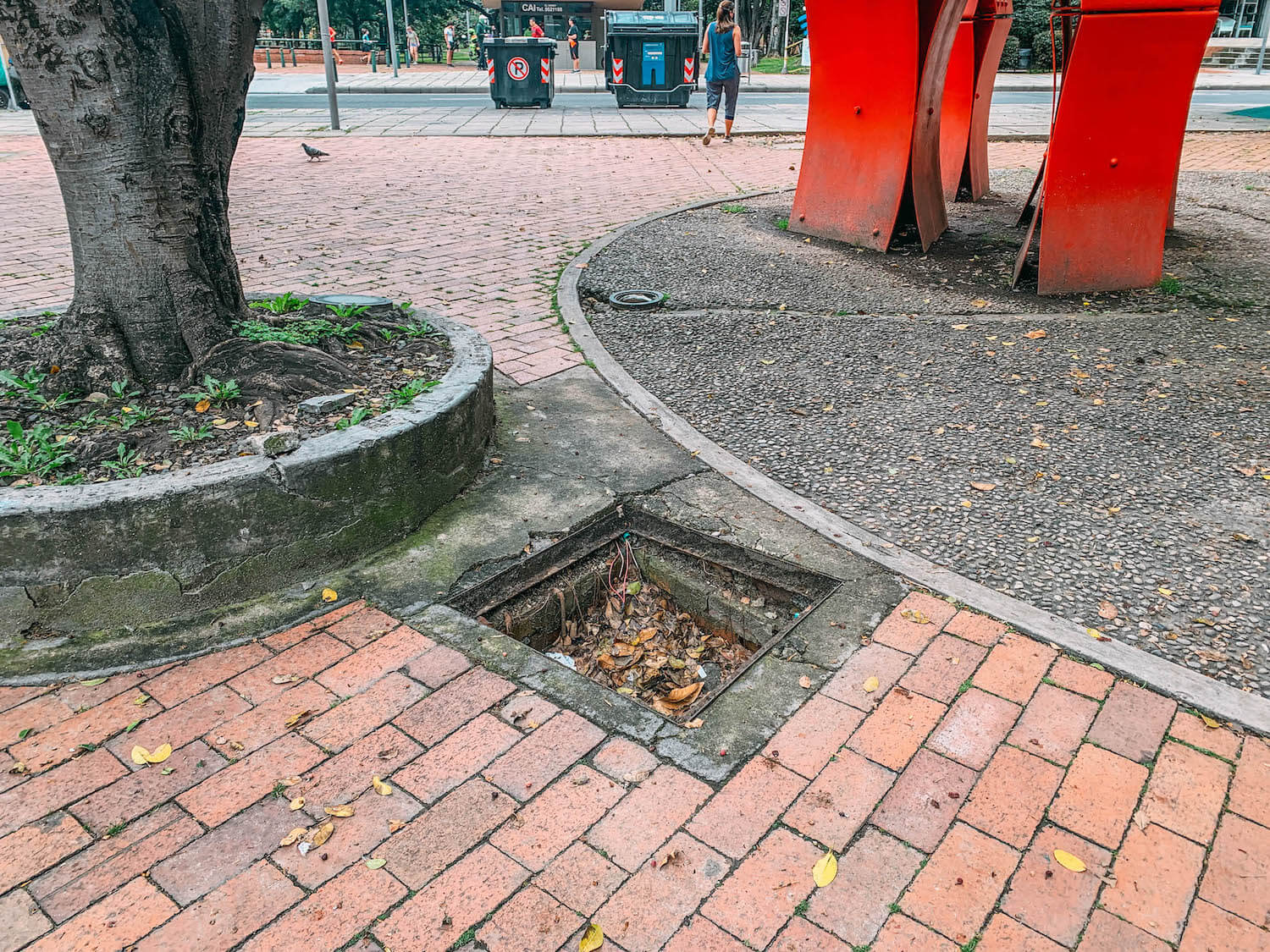
This is an important one as it relates to your physical safety! Sidewalks here in Colombia are known to change levels out of nowhere or even worse, have huge craters/holes that you could accidentally step into. The sidewalks and roads here are not accessible to the physically disabled which is a huge thumbs down.
Bogotá specifically is known for sidewalks made out of loose tiles that will often pop up when you step on them. If it just rained (which is likely because it’s always raining in Bogotá!) the tiles will spit water out at you! Don’t say I didn’t warn you.
4. The lack of rules on the road
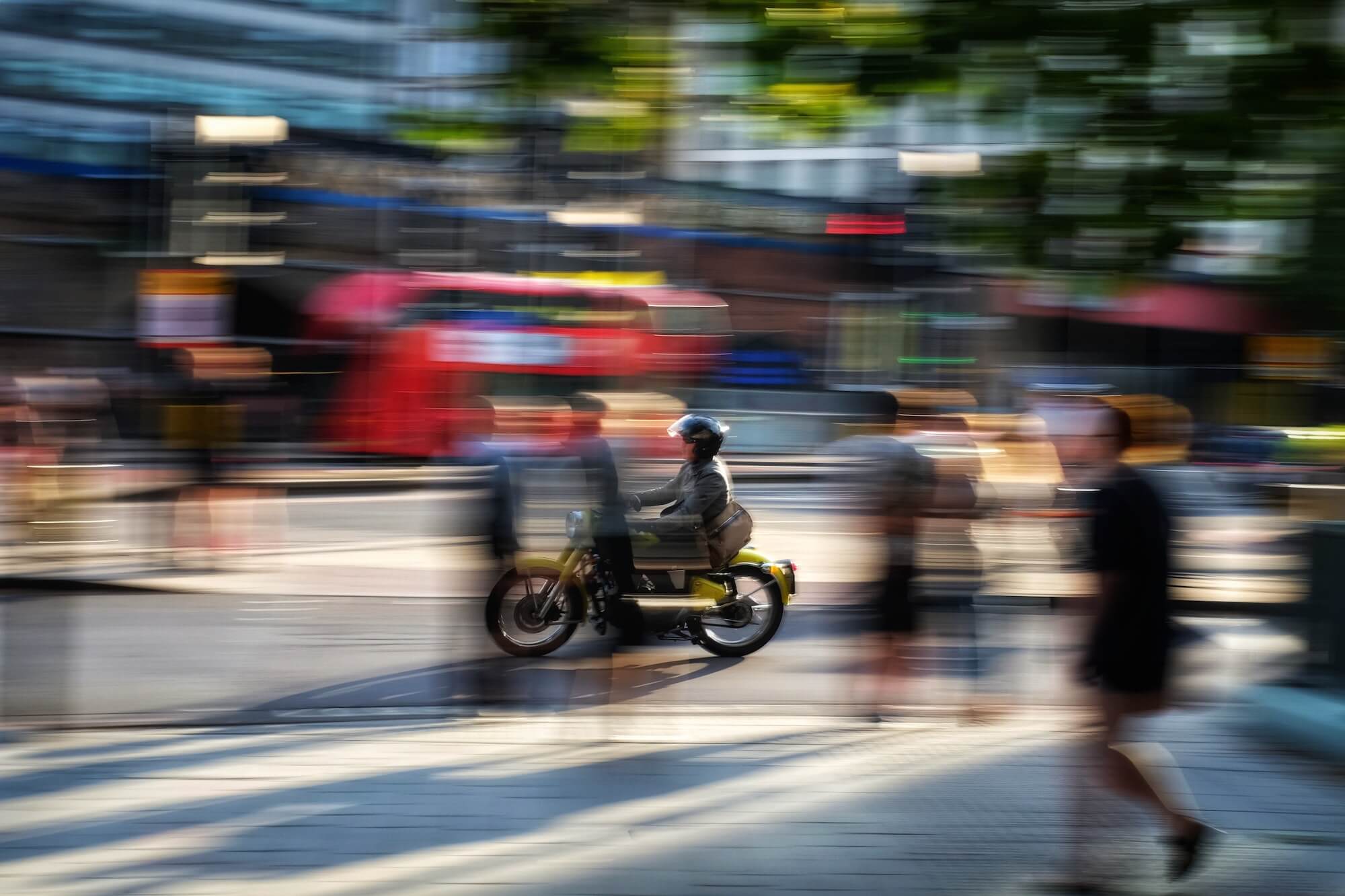
I’m just going to come out and say it – the driving rules here in Colombia are CRAZY. Even 5 years later, I have not gotten used to the craziness of the road.
First off, stop signs are a suggestion, as I don’t think I’ve ever been in a car here that stops fully at a stop sign.
Second, it is a rarity to see drivers use their blinker to change lanes. I don’t know how everyone knows what everyone else is doing but there is some sort of method to this madness I guess?
Thirdly, motorbikes are one of the most common forms of transportation here so you’ll see them all over the road. You will see them riding in-between lanes, and zipping all over the place. Often times, motorbikes will be within inches of another car, and I cringe every single time!
And lastly, please, please, please always look both ways when you are crossing the street – between the cars, motorbikes, and bicycles, you just never know!
I am not telling you this to scare you. I’m telling you so that you are not surprised and so you know that it is just the way it is down here.
5. Street performers and street vendors are very common
Often times when you are stopped at a red light, you will likely see a street performer jump out into the street and either start dancing, doing a magic trick, juggling, or some other circus act. When they are done with their performance, they will visit the first several cars in line asking for a tip. If you have some change, tip these guys! They are hustling trying to make a buck.
Similarly, there are always street vendors going up to car windows to sell fruit, flowers, cold drinks, candy, and snacks. Another common thing you will see are people washing car windshields for a tip. This is up to the driver, so you will likely not have to act on this. Lastly, sometimes you will get people who are not selling anything but go car to car asking for money.
The moral of the story is that this is all totally normal so don’t be scared if people are coming up to your window!
6. The humanitarian crisis in Venezuela and how that relates to Colombia
Listen, I am no expert and I am not here to try and explain the inner workings of the humanitarian crisis in Venezuela. Instead, I would just like to mention it because it does affect your visit to Colombia and is definitely one of the important things to know before visiting Colombia.
More than 1.6 million Venezuelans have crossed the border into Colombia in the past few years to escape the political and economic crisis going on in their home country. It’s extremely sad and has left so many Venezuelan people fighting for their lives and just trying to survive.
That being said you will notice a lot of homeless families on the streets of most major Colombian cities asking for food and money OR selling trash bags or candy to try and make a little bit of money. They will often be holding cardboard signs explaining their dire situation and it will likely say “Nosotros somos venezolanos” or have a little Venezuelan flag drawing on it.
If you are driving within Colombia, you may also see families with suitcases and carts walking down the side of the highways. The solution to this crisis goes far beyond your small food or monetary donation to the people in this situation, but anything helps.
7. Every building has security detail, and barbed wire fencing for security is normal
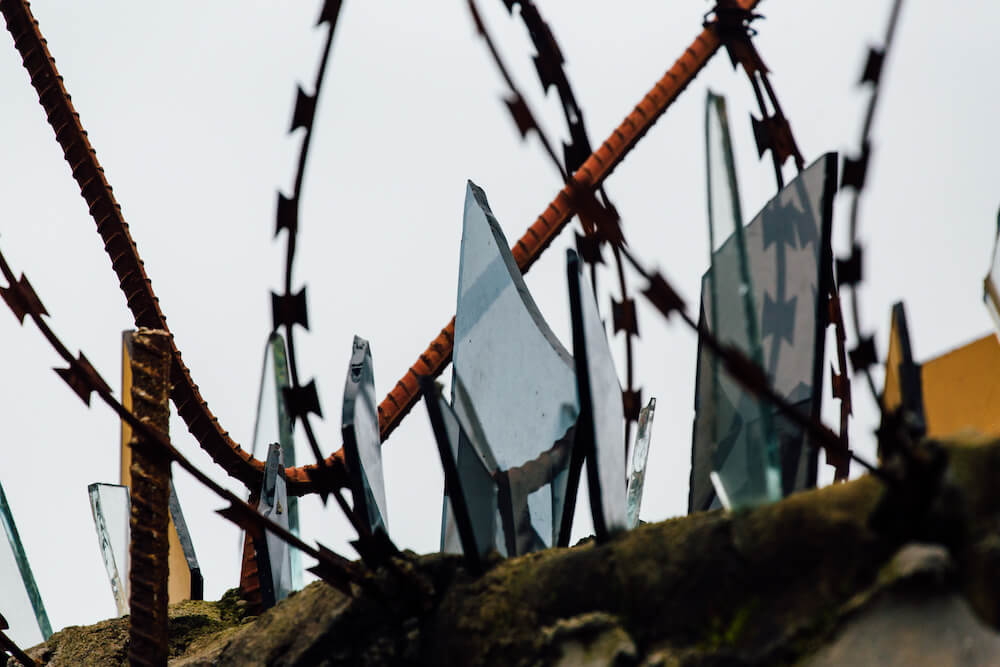
You know how in the US the only apartment buildings that have security are typically the ultra-luxury complexes? Well in Colombia, pretty much ANY apartment complex has front desk security know as “porteros.” Beyond that, you’ll see security personal at pharmacies, grocery stores, clothing stores, office buildings – everywhere.
It can be startling to see so many security gates and guards, plus so much barbed wire protecting buildings. But it’s important to note that Colombia had a very dangerous past so you will see a lot of security measures from this time period still in effect today. Think of it like this: They are existing safety measures rather than super necessary safety measures.
8. There is a military presence in the streets
It’s pretty common to see military personal in full military gear walking down the streets, especially in Bogotá. Not just police, but full-on military. If I saw this in back in Massachusetts I would be extremely concerned, but here it’s super normal and no cause for alarm. You will mainly see them in front of government buildings or in front of an apartment building that may be home to a government official. You’ll also see them on the outskirts of the city doing security detail. Sometimes you’ll see them strolling down the street. All normal
9. Services are cheap but clothing and anything imported is expensive
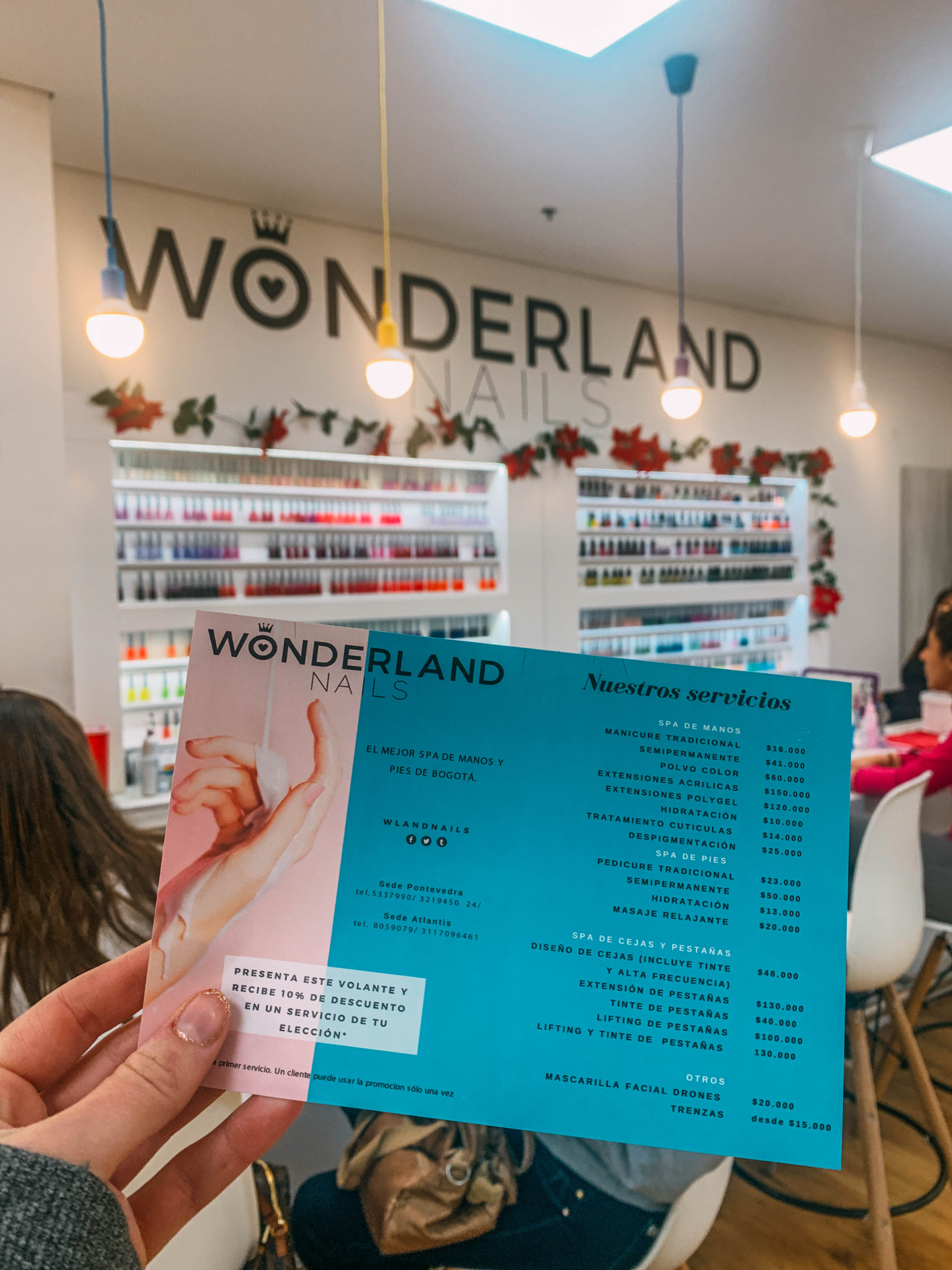
Manicures, pedicures, massages, and beauty services, house cleaning/cooking, and food items are all extremely inexpensive in Colombia. But you will be surprised to know that most clothing and imported items (especially wine!) are actually quite expensive. For example, Yellowtail wine which probably costs $6 or $7 in the USA is like $15 USD per bottle here in Colombia!
10. The only good public transport system in Colombia is in Medellín
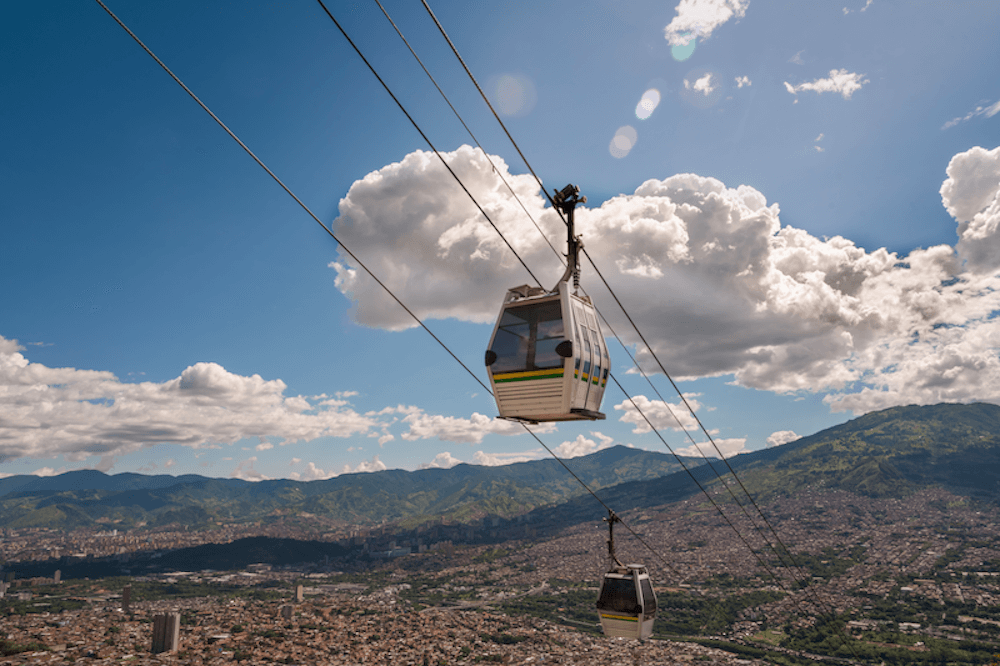
Medellín has an AWESOME public transit system with easily accessible trains and cable cars that will get you anywhere in the city.
In Bogotá, the public transport system is buses ONLY, called the “TransMilenio.” In a city of 8 million people where buses are the only option for public transit, you have to assume that it is not a very efficient system. Think of any major capital in the world (Tokyo, NYC, Madrid…) and they likely have an awesome metro system (well, maybe besides Rome!)
11. Ride apps like Uber, Beat, and Didi are technically illegal…

Even though Uber, Beat, and Didi are technically illegal, they still operate and everyone I know still utilizes these ride pick-up platforms. That being said, a few of the ways to avoid getting in any sort of issue is to sit in the front seat as if a friend is picking you up, and remember your driver’s name in case you get pulled over and a cop accuses the driver or operating Uber. I have NEVER had an issue in the 5 years I have been visiting Colombia, so I wouldn’t worry too much, just be aware that the driver will likely ask you to sit in the front seat!
12. Pico y Placa
As a visitor, this won’t be something that will affect you, but it’s one of the interesting things to know before visiting Colombia! In all of the major cities in Colombia (like Bogotá, Medellín, Bucaramanga, etc) there is something called pico y placa. This is a driving restriction policy in place to help traffic congestion in the cities. Basically, depending on your license plate numbers ending in certain digits, you can only drive on certain days and during certain hours!!! That’s how bad traffic can get here…especially in Bogotá. Think LA traffic level – YIKES.
13. “M” on a bathroom door does not mean “Men”!!!
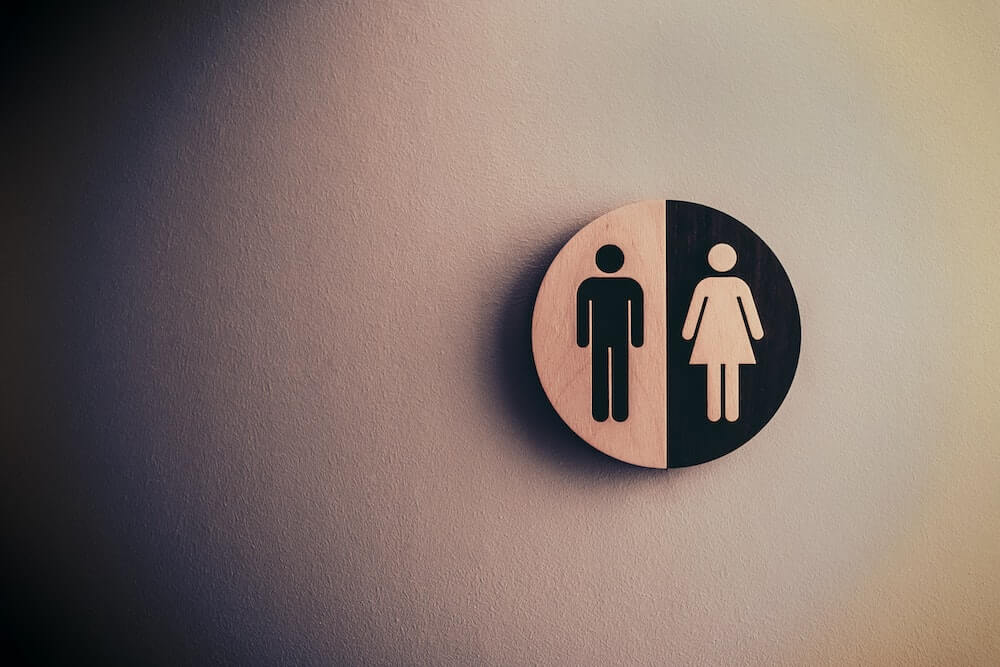
Keep in mind that you are in a Spanish speaking country so M & W won’t apply here for bathroom doors!!! The M on a bathroom door stands for Mujeres aka WOMEN and the “H” on the bathroom door stands for Hombres aka MEN! You may also see D for Damas aka ladies or C for Caballeros aka gentlemen.
14. Always keep in mind the saying “no dar papaya”

“No dar papaya” is a popular saying in Colombia which translates to “don’t give papaya.” This basically means: don’t give someone the opportunity to take advantage of you. Although violent robberies are not common, petty theft is. So don’t walk down the street with your phone out, and not paying attention to your surroundings. You are already a more likely target because you are foreign, so don’t make it easy for someone to steal from you.
Whenever I need to check my phone for something I will ALWAYS take a look at my surroundings first, or stop near the entrance to a store so that I don’t put myself in a vulnerable situation.
I am sure you want to take photos of your trip while visiting Colombia. This is absolutely A-okay to do but I wouldn’t walk around with your $1,000 USD camera slung over your shoulder as you might while traveling in other places.
This would be an example of being flashy and showing what you have – aka giving papaya. Instead, keep your camera in your bag and only take it out when you want to take a photo of something specific.
Although “no dar papaya” is a Colombian saying, I would say to follow this as a general rule of thumb pretty much anywhere you travel!
Post on Colombia safety tips coming soon!
15. Talking about Pablo Escobar can be offensive
One of the most offensive things you can do in Colombia is to talk about the show NARCOS and Pablo Escobar as if he is some cinematic hero. Don’t forget that he was a real person who devastated a country and brought so much pain to so many people. Pretty much every Colombian knows someone who was personally affected by him and that time period in Colombia.
It’s not cool, it’s not glamorous – it’s painful and digs up painful memories of the past. If you’re taking Pablo Escobar tours so you can go home and brag to your friends that you saw where he partied, vacationed, or lived – just don’t. If you’re taking Pablo Escobar tours because you are interested in learning about Colombia’s past and the REMARKABLE comeback the country made after decades of terror, okay.
My opinion: Skip the Pablo Escobar tours and forego your need to see where Pablo Escobar lived or partied or any of that and focus on the beauty of Colombia and the resilient people who make it such a wonderful place.
16. Bogota is one of the most elevated cities in the world
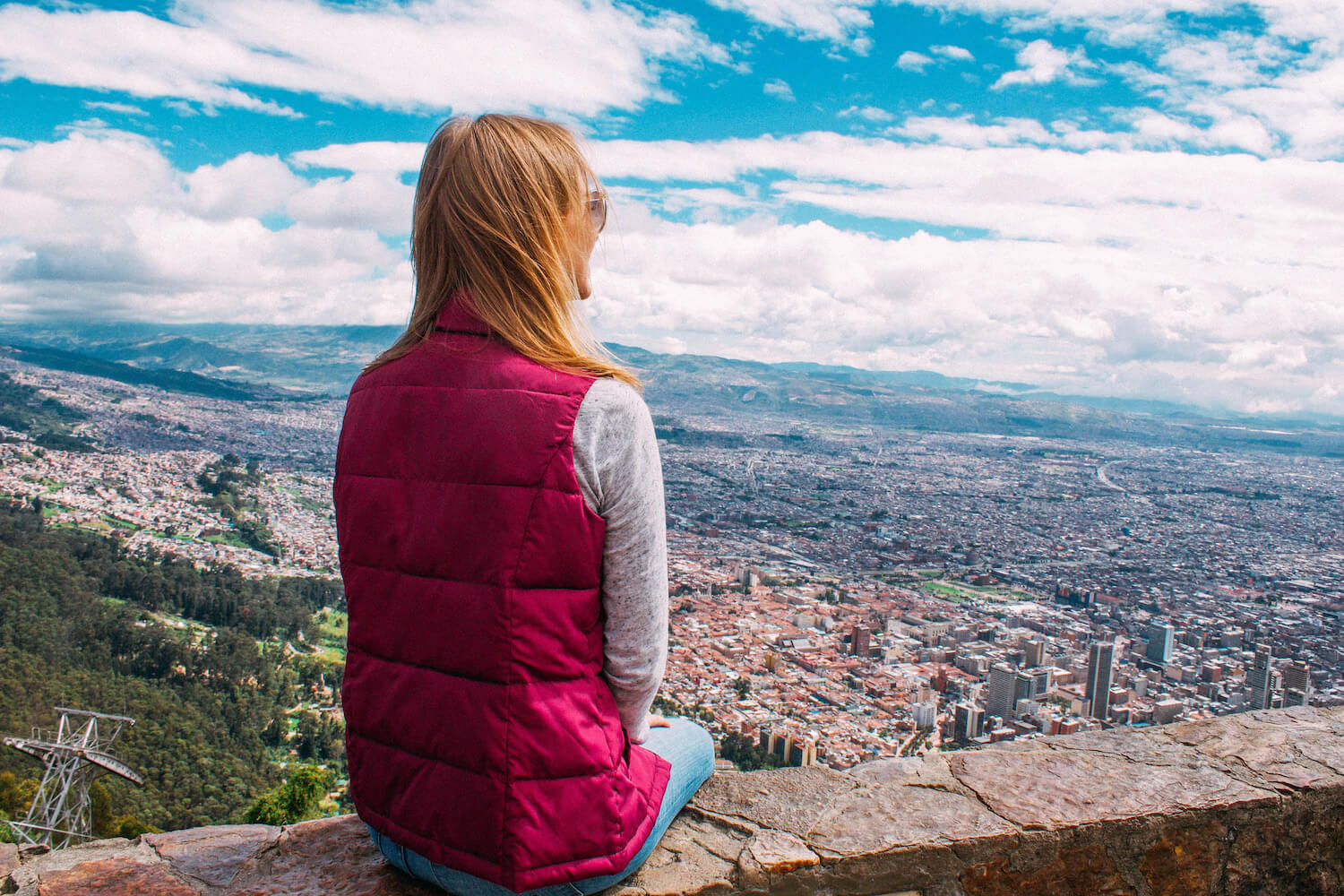
Did you know that Bogotá sits at over 8,660 ft above sea level? That’s over 3,000 feet higher than Denver!!!
That being said, don’t forget to….
- drink tons of water
- don’t do too much strenuous activity on your first day
- but also don’t just lay in bed!
- try to eat light food like soups – luckily Colombia is KNOWN for their amazing soups like ajiaco (a Bogotá specialty)
- try not to drink alcohol on the first day of your trip
…all of this will help you avoid altitude sickness. (In Colombia they call altitude sickness “Soroche.”) Oh, and one more thing – don’t forget your sunscreen because in this high altitude there is less atmosphere blocking the harmful rays!
17. Not everywhere in Colombia is hot
Of course, Colombia has hot weather. In Cartagena, you can expect to be dripping sweat if you’re outside of air conditioning for more than 20 minutes. Down in Leticia in the Amazon, the same. But there is a misconception that ALL of Colombia has extremely hot weather, which is not true! Remember how I was just telling you how highly elevated Bogotá is? That means that the weather can get pretty chilly! In fact, the average daily temperature is in the mid-60s and a normal outfit in Bogotá would be jeans, a long-sleeve shirt, jacket, scarf, and sneakers or boots. Keep in mind that Medellín can be chilly at night even with beautiful 70-degree weather during the day. Make sure to pack accordingly! (Colombia packing list coming soon!)
18. Don’t bother exchanging your money
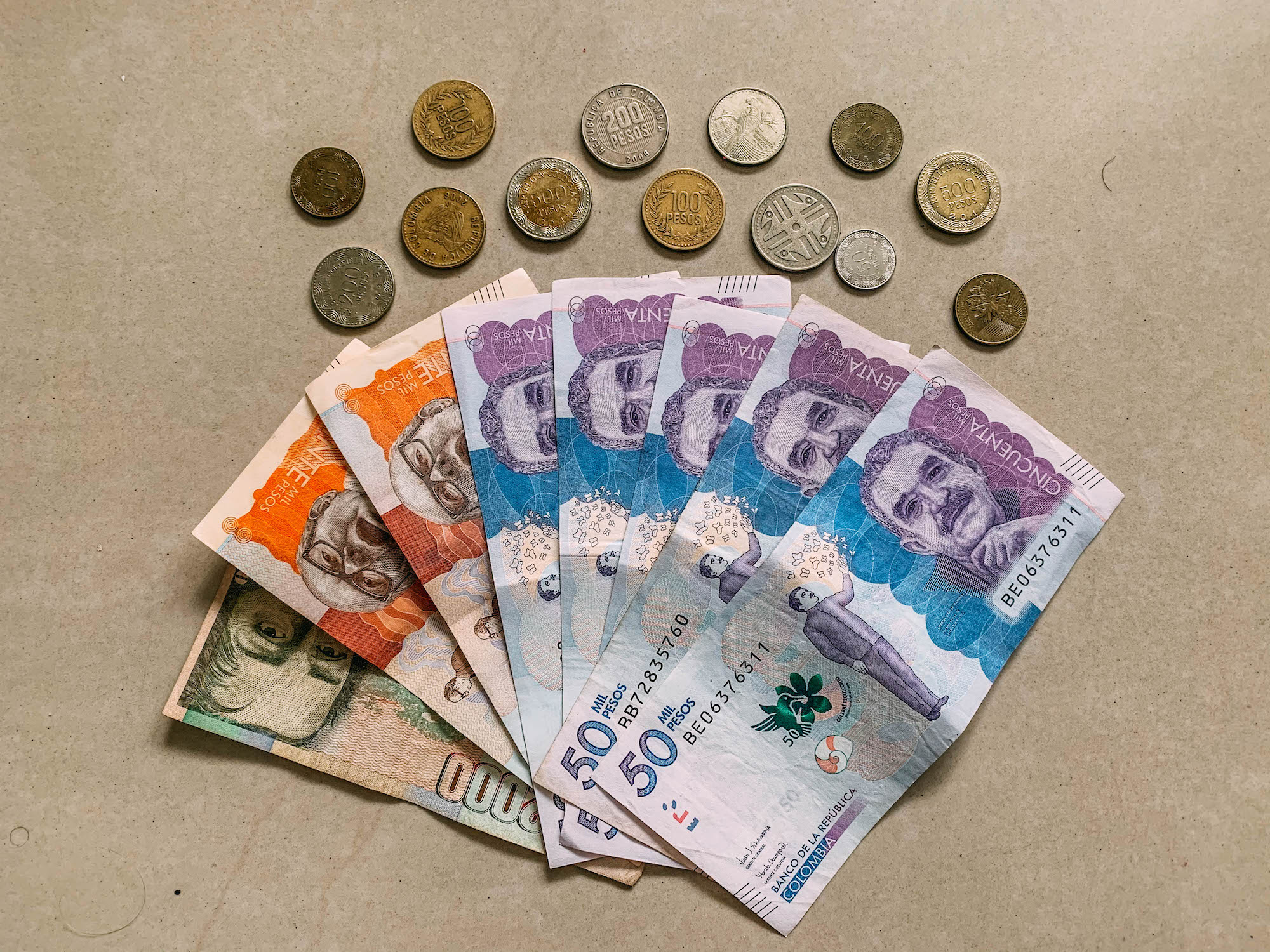
For one, money changers are pretty hard to come by outside of the airport. Though they do exist, I can’t even think of one to recommend to you in Bogotá.
Secondly, the money changers at the airports have a terrible exchange rate so I really wouldn’t recommend using that!
And thirdly, you won’t want to walk around with that much cash on you anyways.
That being said, I really recommend taking money directly out of an ATM. There are several banks here in Colombia that don’t charge a fee so you will likely only get a fee from your own home bank (UNLESS YOU BANK WITH CHARLES SCHWAB!!!) I recommend taking a look at this AWESOME article by A Social Nomad on ATM fees in Colombia if you want to save and kind of get the lay of the land on banks and ATMs here in Colombia.
Because I bank with Charles Schwab, I avoid ATM fees AROUND THE WORLD and also don’t get charged by my bank. Basically what I’m saying is that by banking with Charles Schwab, I use ATMs for free around the world hehe. You can too – check it out! This isn’t an affiliate link BUT by using my link you will get a $500 credit if you open a bank account with them! Just a friend helping another friend
19. There are phrases you need to know if you plan to pay for things with a Credit Card
In the USA and many other countries, all you need to do when purchasing a product is hand over your card and the cashier will swipe and you’re done. Here in Colombia, the payment systems are very different and so the cashier is required to ask you questions when paying with a credit card. This is one of the most helpful things to know before visiting Colombia because I was SO confused when they first were asking me these questions!
- The first question they will ask after you hand over your credit card is “ahorros, corriente, o credito?” you will respond with “credito.” (ahorros is savings, corriente is checking, credito is credit – you will obviously be using credit because you’ll be using an international credit card!)
- The second thing they will ask you is “cuantas cuotas?” you will answer with “una.” Cuotas are like installment payments. So even if you are purchasing a loaf of bread, they will ask how many installments you’d like to pay in. Cuotas only work with Colombian cards so no matter what, your card will only be charged one quote – but you still have to answer
- The third thing they will ask you is “últimos dígitos?” you will answer with the last 4 digits of your credit card number. Definitely memorize the last 4 digits of the card you plan to use (or write it down somewhere) because if you don’t know, they will need to take the card out, find the numbers, and then start the payment process all over again.
- Lastly, they will ask you “quieres una copia?” aka do you want a copy of the payment receipt. If you need this for accounting purposes by all means answer si, but you will end up with a LOT of little papers! I usually say no, and just keep the “factura” or the detailed bill.
20. In restaurants, payment is made at the table
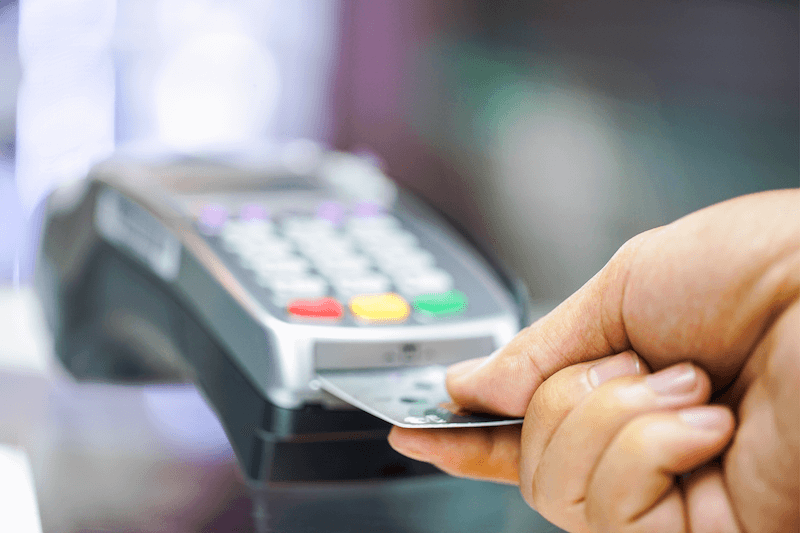
Speaking of credit cards and payment…you know how in the USA it’s super common for the waiter to take your card away where they will charge it without you being present? That doesn’t happen in Colombia! Another of the important things to know before visiting Colombia and going out to dine is that the waiter will actually bring a portable credit card system directly to the table. All you have to say after you ask for the check is “datáfono” so that they know you are paying by card and not by cash (“efectivo”). I am telling you this so you know to never give your credit card and see it go out of sight – that is not normal!
Well, that about wraps up this post on 20 things to know before visiting Colombia! I hope you learned something new and gained some insight before your trip. If you have any questions at all, make sure to drop a question in the comments below and I’ll get back to you ASAP!
Wander On,
Wanderluluu xx






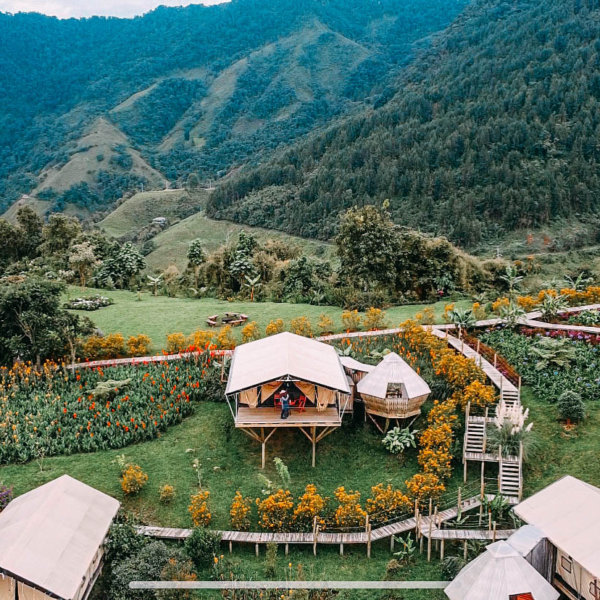
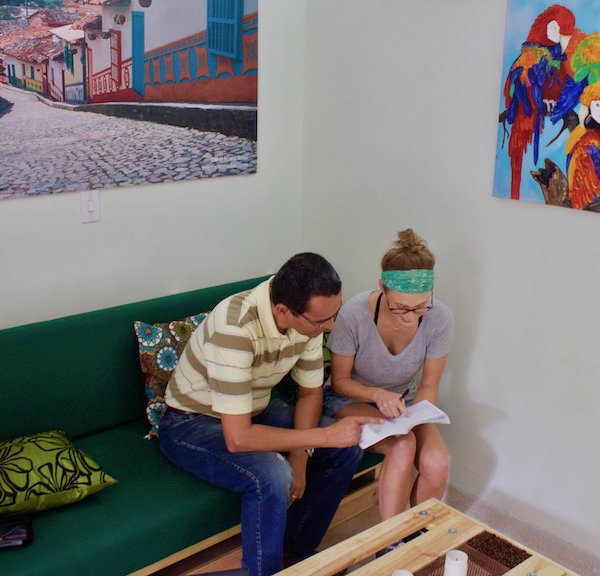
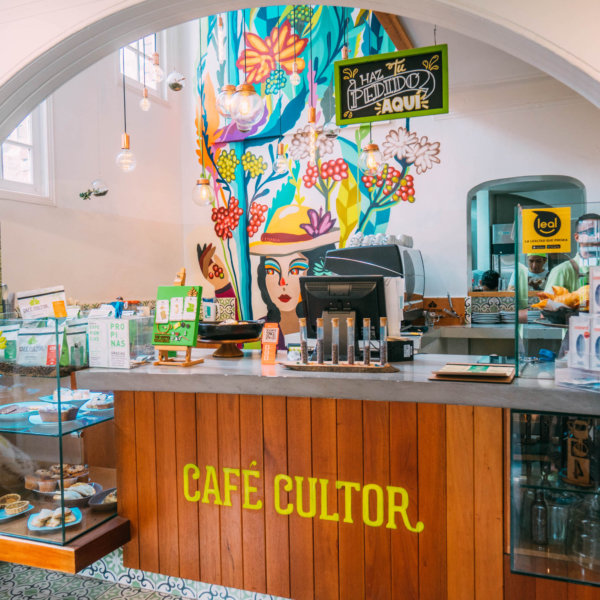



20 comments
Rory
Great post!
I especially liked learning about “no dar papaya.” Hope to one day experience Columbia and these tips are already so helpful!
Thanks for sharing!
Lauren Mae Pelkey
Rory – so glad you enjoyed the post and found it helpful! Yes the no dar papaya is a BIG one to keep in mind.
Margarita
Thank you very much for a great article about my country!!
Lauren Mae Pelkey
I’m so glad you liked it! Means a lot coming from a Colombian
Juan
Hi! I’m from Colombia and this post it’s too much certain with the things about the country. Nice tips for all people who wants to come here. Bucaramanga it’s pretty beautiful and have amazing nearby things to do.
Congrats!.
Lauren Mae Pelkey
Thank you so much Juan – means a lot coming from a Colombian!!!
Heidi Murphy
this was really informative to me. well done and thank you very much. i leave on Monday!
Lauren Mae Pelkey
Hi Heidi – so glad to hear you found this helpful. I hope you have a GREAT time in Colombia!
Greg Hemmerick
Just read your advice and was nodding and laughing. Everything you say is absolutely true. Very informative for first time visitors to wonderful Colombia. I have been coming here for 7 years and like you, now call Bogota home. One thing I might mention to add, off the top of my head, is when paying for a meal at a restaurant is
“con propina” or ” con servicio” to include the tip. We have some friends coming to visit soon and I googled avoiding altitude sickness and came across your blog. Super happy I did. Always great to meet a fellow American who gets it. Thank you!
Lauren Mae Pelkey
Hi Greg – that is a great point about adding a note about “con propina” or “con servicio”! I’m going to add that now – thank you! Also, so glad you came across the altitude sickness blog and hopefully it was helpful to your friends!
AC
I’m reading this post-Colombia trip, and it’s spot on! Thanks for sharing
Lauren Mae Pelkey
So glad to hear that – thank you for the feedback!
Hanna
Thanks so much for all of the helpful tips and its all written in a great way to give a realistic expectation.
Can you recommned a place for volumeeyelash extrnsions in bogota or cartagena
Lauren Mae Pelkey
Hi Hanna – so glad you found this post helpful! I unfortunately don’t have a recommendation for eyelash places in Bogota as I don’t get that service done, but I do know of a few near my neighborhood if that is helpful? Shoot me a DM on Instagram (@wanderluluu) and I can find them for you!
Jenny Desmond
Excellent article, Lauren! I particularly love tip #20 about payment being made at the table. Being from Colorado, we are more relaxed about the waiter walking away with our credit card, whereas my Colombian friends warned me to be sure my card never leaves my sight.
Also, THANK YOU for addressing the “Escobar tourism”, this is something that we can be so ignorant about. Let’s spend our money in helping entrepreneurs get ahead rather than supporting the reputation of someone who did heinous atrocities to their country (and ours).
I’m going to share this blog post with my friends and guests traveling to Colombia, it’s quite consistent with my travel experiences.
Lauren Mae Pelkey
Hi Jenny – thank you so much for this lovely feedback! I really appreciate you sharing this with your friends and guests traveling to Colombia…that truly means so much to me!
Merle Krouse
Center for Disease Control recommends a ton of vaccinations before going to Colombia. We are going to be in Bogota, Cartegena and Medellin (sorry about the spelling) for 11 days in September. What’s your thoughts?
Lauren Mae Pelkey
Hi Merle, the only vaccine I needed to get when first coming to Colombia (besides being up to date on all the “normal” vaccines you needed to attend school in the USA back in the 90s haha) was Yellow fever vaccination – but that was specifically because I was going to be traveling the the Amazon and to Parque Tayrona. I doubt you need a Yellow fever vaccine for Medellin or Cartagena and you definitely don’t need it for Bogota (there are really no mosquitoes in Bogota – it’s 8500 feet elevated!) HOWEVER, that Yellow Fever vaccine has come in handy in so many of my travels across southeast asia and Europe so if you are big travelers, I think it’s a really important vaccination to get. This all being said, I am NOT a medical professional, so my best advice is to make an appointment with a travel doctor (I recently went to a CVS minute clinic and made a travel doctor apt) and ask exactly what you need to get in order to have a safe trip. They will go through your entire vaccine history and look through what is necessary for you. Hope this helps!
Sazz
Hi I just wanted to know about the naming culture in Colombia. Do they commonly name their children after their own. For example, Jose Rodriguez Garcia is the father and Jose Rodriguez Pelaez is the son?
Lauren Mae Pelkey
I’m sorry I’m not exactly sure how the naming process works in Colombia!